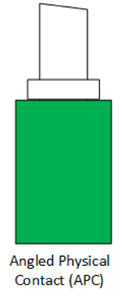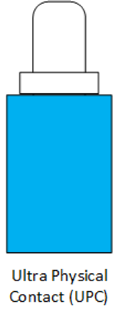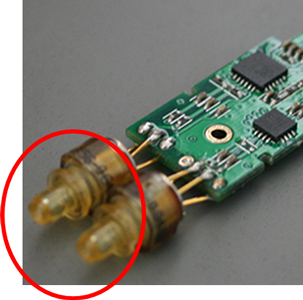Can APC Connectors be used in transceivers?
APC, or Angled Physical Contact, is a fiber connector end face. APC connector end faces are angled at 8° to ensure better performance by reducing the light reflected between two connected fibers. APC end faces are found only on single-mode patch cables. They are available in multiple connector types, including LC and SC noted by the color of the connector, green.


The mating of two APC connector end faces show how the angling of the connector end face reduces a pathway for reflectance between the two connectors.
Comparing APC and UPC Connectors
UPC (Ultra Physical Contact), not to be confused with PC (Physical Contact), connectors are also only applicable to single-mode fiber, and are distinguished by the connector’s blue color.


The mating of two UPC connector end faces show how light is passed between the two connector ferrules.
The physical and mechanical properties of APC and UPC connector types are vastly different and should not be mated. Mating APC and UPC connector types will create misalignment between the mated connectors. Misalignment between connector end faces will not only result in more loss, but possibly damage the fiber connections.

UPC and APC connector mating
APC, Connectors, and Transceivers
Standard single-mode transceivers using LC or SC type connectors are designed for UPC type of physical contact.

Inside of an SFP-type transceiver.
The use of APC connectors with standard transceivers introduces risk beyond just adding loss to the network. Using APC connectors can potentially damage the transmitter (TOSA) and receiver (ROSA) interfaces within the transceiver.
Solving the Network Need
The use of APC connectors in standard transceivers is not recommended. To avoid increased optical loss in the network and potential damage to the transceiver, follow these guidelines:
- Unless the transceiver specifically states APC connectors are accepted, use UPC connectors.
- Should connectivity between a transceiver and an APC connector field be required use a conversion patch cable (UPC to APC) to connect from a transceiver to an APC interface.




